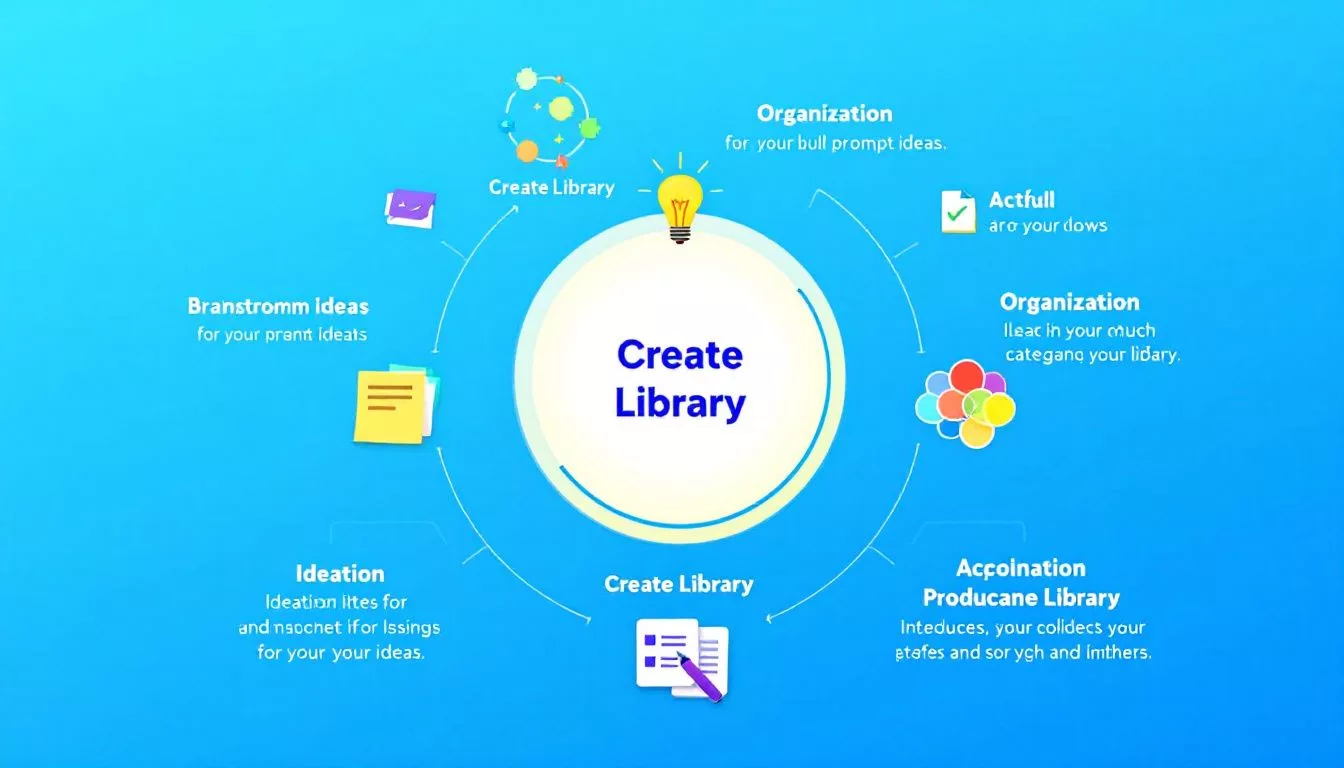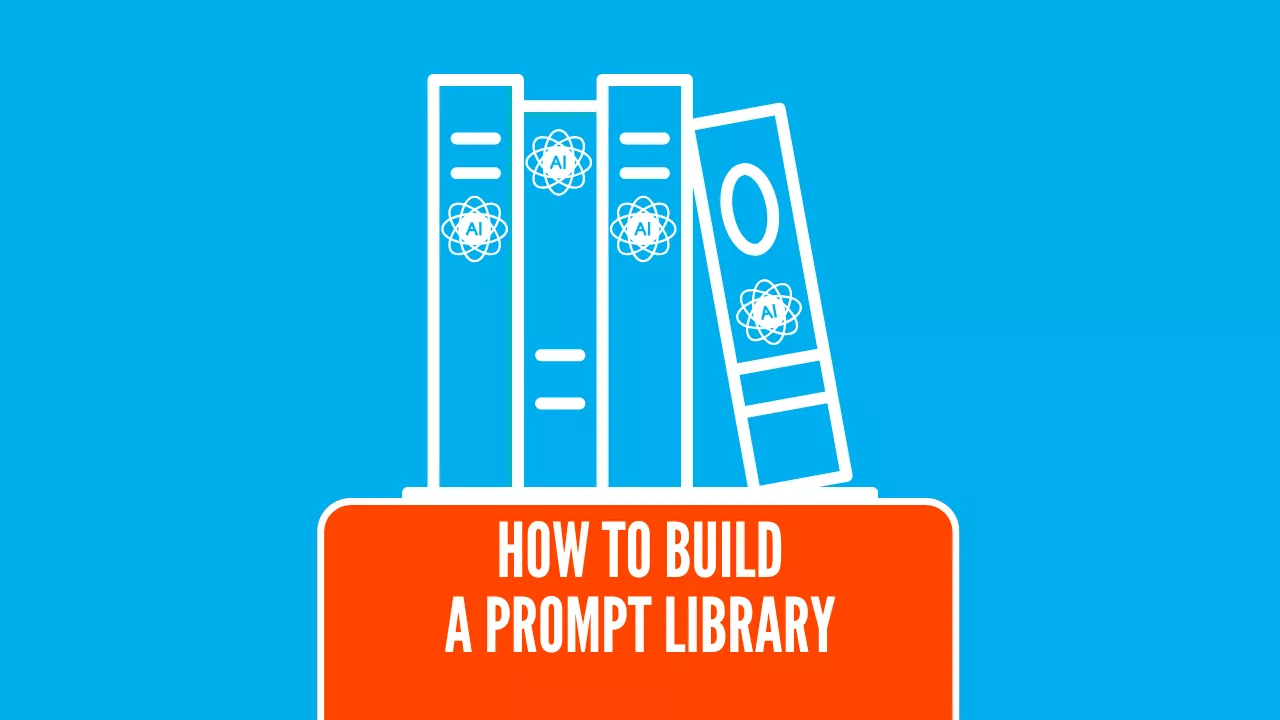Like many digital marketers post OpenAI’s release of ChatGPT, you’re probably starting to build up a resource of AI prompts that help you create campaigns. And, if you’re anything like me, you’re looking for a way to store, search and improve on these prompts. That’s were building a prompt library comes in. This guide aims to help you build a prompt library, from understanding its basics to organizing prompts effectively and using the right tools. By the end, I hope you have a functional library that enhances productivity and consistency.
Key Takeaways
A prompt library is essential for enhancing interaction with AI systems, streamlining workflows, and ensuring consistency across organizations.
Building a prompt library involves understanding its purpose, gathering existing prompts, and organizing them effectively for quick access and usability.
Collaboration and regular updates are crucial for maintaining a dynamic prompt library that adapts to user feedback and evolving organizational needs.
Understanding the Basics of a Prompt Library

A prompt library is a collection of best and frequently used prompts designed to enhance interaction with AI systems. Organizing these prompts systematically enhances user efficiency and productivity. This not only saves time but also streamlines workflows, making it easier for organizations to maintain consistency in communication with AI. An ai prompt library democratizes access to AI expertise, allowing all employees to benefit from advanced capabilities and leading to improved performance.
Moreover, having a well-organized prompt library and your own prompt library ensures that users can quickly find the same prompt that has been optimized and pre-tested for high output quality. This provides immense value in optimizing prompt usage and maintaining a high standard of AI interactions.
Think of it as having a curated collection of recipes that you can rely on to deliver consistently delicious results every time.
Identifying the Purpose and Goals
Before:
The first step in building an effective prompt library is to identify its purpose and goals. Engaging stakeholders through surveys, interviews, and focus groups can help uncover the specific tasks and challenges that the library needs to address. Understanding the current pain points around prompt usage allows you to tailor the library to meet your team’s needs.
After:
Identify the purpose and goals of the prompt library.
Engage stakeholders through surveys, interviews, and focus groups to uncover specific tasks and challenges.
Understand the current pain points around prompt usage to tailor the library to meet your team’s needs.
Once the core goals are defined, it’s crucial to document and communicate them to keep contributors aligned. This ensures that everyone involved understands the scope of the project and works towards the same objectives. A well-scoped prompt library addresses the needs of all teams using it without becoming unwieldy.
Gathering Existing Prompts
Creating a comprehensive prompt library starts with gathering existing prompts. Look back through chat history, previous projects, and team inputs to gather prompts that have been used successfully. Online communities and forums are also valuable sources for finding prompts that others have found effective.
Research papers and articles can provide prompts that are backed by academic rigor, while networking with other writers can offer fresh perspectives and ideas. Document these prompts by copying and pasting them into a central file, and make sure to include the best-performing prompts and those for common tasks.
Organizing Your Prompts Effectively

Now that you’ve gathered your prompts, it’s time to organize prompts effectively. A well-organized prompt library improves the speed and quality of work using generative AI prompts. Users can quickly find relevant prompts. This is made possible through well-structured navigation, tagging, and search features.
This section will guide you through categorizing prompts, choosing an organizational system, and implementing version control.
Categorize Prompts
Categorizing prompts is essential for quick retrieval and efficient use. Prompts can be categorized based on their purpose, style, or domain. For instance, project- and campaign-based prompts focus on specific tasks and contexts, while task-based prompts create a framework that incorporates multiple steps and functions for better usability.
Using metadata like tags can significantly improve the discoverability of prompts. Tools like Google Sheets and Excel Online allow easy categorization and sharing of prompt information, while Airtable provides flexible database capabilities, and Notion offers a versatile workspace for integrating prompts with other project management tasks.
Choose an Organizational System
Choosing the right organizational system is crucial for navigating user needs across different modalities and enhancing discoverability. Consider both your current workload organization and how users will navigate projects when selecting an organizational system.
Naming your files clearly for easy identification and retrieval is also important for digital organization.
Implement Version Control
Version control is vital for managing updates and ensuring the integrity of prompts within a library. Documenting changes, including who made them and when, helps maintain clarity and accountability in prompt management. This allows you to track revisions and understand the evolution of prompts over time.
Enhancing Prompt Utility with Metadata
Metadata can significantly enhance the utility of prompts by providing additional context and information. Including details like functions, modality, category, keywords, and tags makes prompts more searchable and applicable to various tasks. Extracting generic elements of prompts and specifying individual elements such as subject, keywords, tone, and word count can also enhance their applicability.
A comprehensive metadata field in a prompt library should include Prompt, Use Cases, Category or Tag, Version, and Status, among others. Including timestamps for the creation and last usage of prompts aids in tracking updates and relevance. This ensures that your prompt library remains focused and serves its core goals.
Building Your Prompt Library Using Tools

Building your prompt library can be made easier with the right tools. Starting with a Minimum Viable Product ensures that the essential features are implemented first. Tools like Google Sheets, Excel Online, Airtable, and Notion offer various functionalities to help you organize and manage your prompts effectively.
As the number of prompts increases, features such as indexing, API access, and enhanced search become crucial for effective management.
Google Sheets and Excel Online
Google Sheets and Excel Online are effective tools for creating and managing a prompt library. Google Sheets allows users to collaborate in real-time, enhancing the management of prompt libraries. Some teams may have read-only access to certain parts of the prompt library, ensuring control over modifications.
Airtable and Notion
Airtable offers custom views and controls that can enhance the usability of a prompt library. Role-based permissions in Airtable and Notion allow for controlled access and facilitate collaboration among team members. Utilizing these tools can significantly improve the overall management of a prompt library, leading to enhanced efficiency and organization.
Collaborative Features and Shared Governance

Collaboration and knowledge sharing are crucial for ensuring all teams benefit from the prompt library. A prompt library enhances team collaboration by centralizing knowledge, thereby reducing redundancies and risks of information silos.
Tailoring training resources to fit different user roles can further enhance overall engagement with the prompt library.
Central Repository
Centralizing the prompt library on a single platform streamlines collaboration and access for all team members. This helps prevent information silos within teams and boosts productivity.
A central repository is a valuable resource for sharing work among colleagues and inspiring them with prompts written by others.
Role-Based Permissions
Implementing role-based permissions allows for tailored visibility and contributions to the prompt library. This enhances security by controlling who can edit or access certain prompts.
Crowdsourcing Prompts
Crowdsourcing can increase the variety and relevance of prompts in the library by incorporating diverse team inputs. Quality control mechanisms are essential in crowdsourcing to ensure that only approved prompts are included in the library.
The ‘Draft’ status allows team members to add new prompts without completing all details, encouraging contributions to the library.
Maintaining and Iterating Your Prompt Library
A prompt library should be viewed as a dynamic entity that requires constant updates and user input to remain effective. Regularly revisiting and updating the goals of the prompt library helps it adapt to changing organizational needs.
Prompts can be improved over time by categorizing better and making tweaks to curate prompts and similar prompts.
Regular Reviews and Updates
Maintaining a prompt library requires regular updates to incorporate new ideas and best practices. Regular reviews and updates are essential to maintain the prompt library effectively.
Channels for user feedback are crucial for the continuous improvement of the library.
User Feedback Integration
Collecting user feedback is essential for understanding how the prompt library can better serve its users. Establish multiple channels like surveys, direct communication, and suggestion boxes to facilitate user feedback collection.
Utilize feedback to identify pain points and areas for enhancement in the library.
Best Practices in Prompt Engineering

Effective prompts should contain specific details to guide AI, minimizing ambiguity and enhancing response relevance. Directing AI towards what to do, rather than what to avoid, enhances response clarity and effectiveness. Breaking complex tasks into simpler steps helps manage the AI’s focus and improves output quality.
Assigning a specific persona to the AI can lead to more relevant and contextually appropriate outputs. Using chain of thought prompting encourages the AI to provide detailed reasoning alongside its answers.
Recognizing the limitations of AI models is crucial for setting realistic expectations in prompt outcomes.
Training and Adoption
A well-structured prompt library serves as a training tool for new employees, facilitating their understanding of AI interactions. Integrating prompts into daily work and leveraging experimentation and learning can scale generative AI use.
Guidelines, examples, and tailored training are essential for teams to effectively use a prompt library. Structured onboarding processes for new users can significantly improve familiarity and usage rates of the library.
Example Prompts and Templates
Providing example prompts and templates can help standardize the prompt creation process, ensuring consistency and improving efficiency. For instance, an example of a meta prompt for email marketing is: “Act as a professional email copywriter hired by this company. Company details: AI Academy is a company that provides practical education for non-technical people who want to play an active role in the AI revolution.”
Such templates can guide AI tools to produce relevant and high-quality results.
Wrapping Up
In conclusion, building a prompt library is a powerful way to streamline AI interactions and enhance productivity. By understanding the basics, setting clear goals, gathering and organizing prompts effectively, and leveraging the right tools, you can create a valuable resource for your team. Regular updates and user feedback ensure that the library remains dynamic and effective. Start building your prompt library today and unlock the full potential of generative AI!
Frequently Asked Questions
What should be included in the fields of a prompt library?
A prompt library should definitely include fields like Prompt, Use Cases, Category or Tag, Version, and Status to keep everything organized. This way, you can easily find and utilize prompts that best fit your needs!
What is the KISS methodology in the context of a prompt library?
The KISS methodology means “Keep It Simple, Stupid,” highlighting that a prompt library should be straightforward to make it easy for users to engage with it effectively. Keeping things simple encourages more people to utilize the library.
What is the purpose of the ‘Draft’ status in a prompt library?
The ‘Draft’ status lets team members contribute new prompts without needing to finalize all the details, making it easier for them to share ideas and enhance the library. It’s a great way to foster collaboration!
What is OpenAI working on regarding ChatGPT?
OpenAI is focused on developing a business and enterprise version of ChatGPT, possibly featuring a shared prompt library. This could really enhance collaboration and customization for users!
What are some recommended tools to manage a prompt library?
For managing a prompt library, Google Sheets, Excel Online, Airtable, and Notion are all excellent choices. They offer flexibility and organization to keep your prompts easily accessible.

